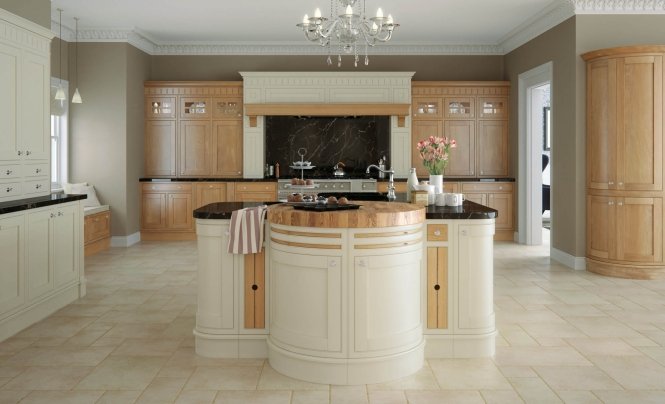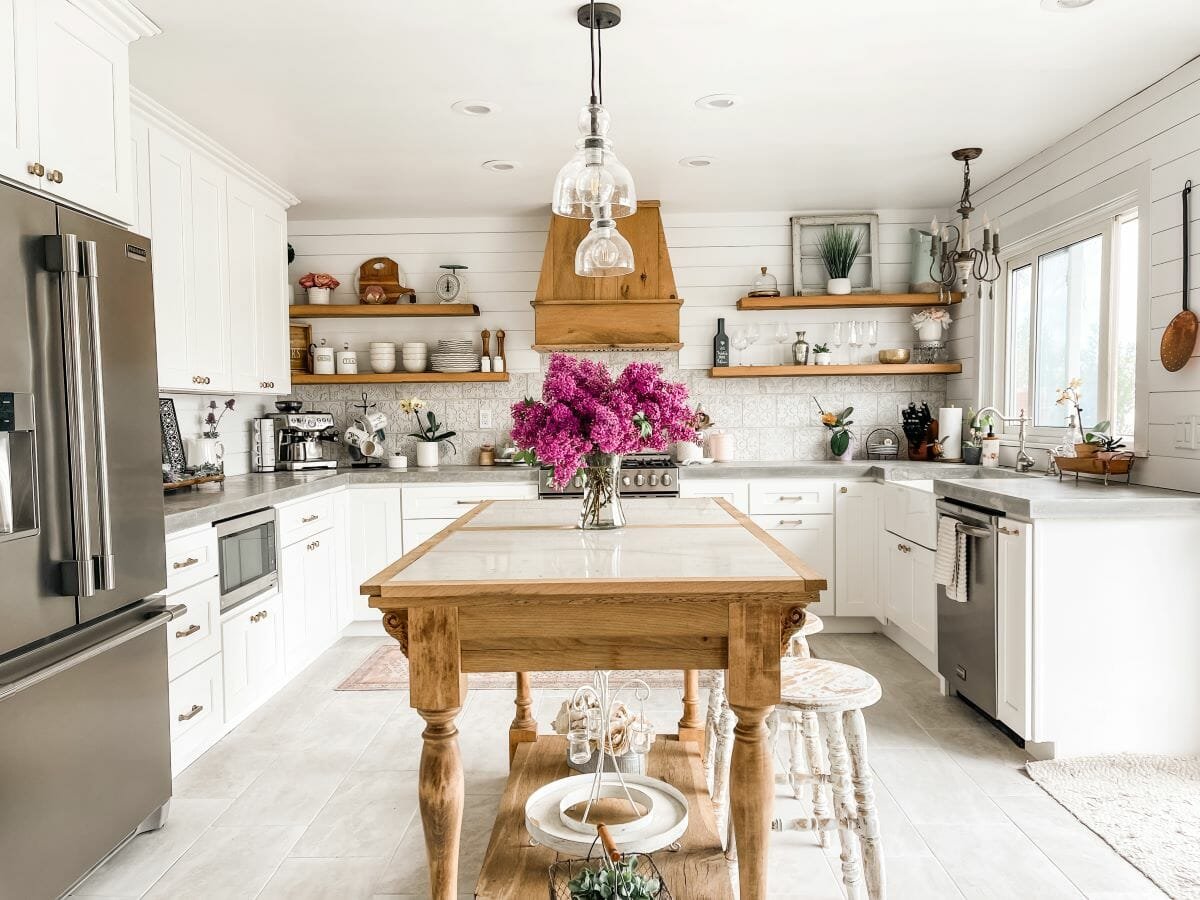A kitchen collection refers to a comprehensive assortment of tools, utensils, cookware, and appliances that are essential for home cooks and culinary enthusiasts. It serves as the foundation for creating both an efficient cooking environment and a delightful culinary experience. The primary objective of assembling a diverse kitchen collection is to ensure that a variety of tasks, from meal preparation to cooking and serving, can be executed seamlessly. This not only enhances the efficiency of food preparation but also promotes a more enjoyable cooking experience.
At the heart of a kitchen collection are essential tools and utensils such as knives, cutting boards, mixing bowls, and measuring cups. These items are crucial for the preparation process, enabling home chefs to execute recipes with precision. Cookware, including pots, pans, and baking sheets, constitutes another pivotal category within a kitchen collection. Each type of cookware serves a specific purpose, allowing home cooks to appreciate the nuances of various cooking techniques, from sautéing to baking. Furthermore, the inclusion of essential appliances such as blenders, food processors, and mixers is vital, as they can significantly streamline and aid in the efficiency of meal preparation.
By investing in a well-rounded kitchen collection, home chefs can maximize their culinary potential. A thoughtfully curated collection not only fulfills practical needs but also inspires creativity and experimentation in the kitchen. Each element contributes to a cohesive cooking experience, allowing for a seamless transition between different cooking processes. Ultimately, understanding the core components of a kitchen collection is the first step towards creating a functional and inviting culinary space. This sets the groundwork for further exploration of specific items and categories that can enhance any home chef’s kitchen.
Essential Items to Include in Your Kitchen Collection
A well-equipped kitchen collection plays a crucial role in enhancing the culinary experience for any home chef. To facilitate efficient cooking and preparation, it is essential to curate a selection of indispensable items. Below, we will categorize these essentials into four key segments: cooking tools, cookware, appliances, and storage solutions.
Starting with **cooking tools**, a set of sharp knives is paramount. A chef’s knife, paring knife, and bread knife are essentials for various cutting tasks. Pair these tools with a sturdy cutting board to protect your countertops and maintain the longevity of your blades. Additionally, measuring cups and spoons are vital for ensuring precision in recipes, allowing for the perfect balance of flavors.
Next, the **cookware** category offers various pots and pans crucial for preparing a range of dishes. A non-stick frying pan is invaluable for healthier cooking, while a heavy-bottomed saucepan is particularly useful for simmering sauces and boiling grains. Don’t forget baking sheets, which are necessary for oven-baked items, from cookies to roasted vegetables.
Moving on to **appliances**, every kitchen collection should include at least a basic blender and a toaster. A blender is essential for smoothies, soups, and sauces, enabling a versatile cooking experience. A stand mixer can revolutionize baking efforts, efficiently mixing everything from dough to whipped cream with ease.
Finally, **storage solutions** are critical to maintaining organization in the kitchen. Airtight containers and jars help keep dry goods fresh and accessible. Look for stackable options to save space, ensuring that your kitchen collection remains neat and manageable. Investing in high-quality storage solutions minimizes waste and promotes efficiency in daily cooking routines.

As you build your kitchen collection, it’s essential to select items that reflect your culinary style and preferences. These essentials serve not only functional purposes but also inspire creativity in the kitchen.
How to Curate Your Kitchen Collection Based on Your Cooking Style
Creating a personalized kitchen collection is essential for enhancing your culinary experience, as it allows you to reflect your unique cooking style and preferences. The first step in curating your kitchen collection is to assess your cooking habits. Are you a casual cook who enjoys preparing simple weeknight meals? Or perhaps you take pride in your skills as an aspiring chef, eager to experiment with advanced techniques and recipes? For those who find joy in baking, your kitchen essentials may lean towards specialized tools and gadgets.
Once you have identified your cooking style, consider the key items required for your specific needs. Casual cooks may focus on all-purpose cookware, such as non-stick pans and versatile baking sheets, to facilitate quick and easy meal preparation. This foundational kitchen collection can be complemented by essential utensils like measuring cups, mixing bowls, and a reliable cutting board.
Aspiring chefs, on the other hand, should invest in quality tools that elevate their cooking experience. This may include items like chef’s knives, mandolins, and immersion blenders. Furthermore, specialty cookware, such as cast iron skillets or Dutch ovens, can enhance the ability to create diverse dishes and allow for greater creativity in the kitchen.
For baking enthusiasts, a well-rounded kitchen collection may incorporate items like stand mixers, silicone baking mats, and pastry tools that enable precision and ease. Emphasizing quality over quantity is particularly crucial; investing in a few top-tier pieces can lead to more enjoyable cooking experiences.
Overall, understanding your preferences and cooking style is fundamental in curating a kitchen collection that truly enhances your culinary journey. With the right tools tailored to your needs, you can elevate your cooking from ordinary to extraordinary.
Maintaining and Expanding Your Kitchen Collection: Tips for Longevity
Maintaining a kitchen collection requires attention to detail and a commitment to proper care practices. Each item in your collection, whether it is made of wood, stainless steel, or features a non-stick coating, warrants specific maintenance techniques to extend its lifespan and ensure optimal performance.
For wooden utensils and cutting boards, it is crucial to clean them with mild soap and water immediately after use to prevent staining and absorption of odors. Avoid soaking them in water, as prolonged exposure can lead to warping. Regularly oil your wooden items with food-safe mineral oil to keep the wood hydrated and prevent cracking. Stainless steel kitchen tools, while quite durable, require a different approach. They should be washed with warm, soapy water, and dried promptly to prevent water spots and maintain their shine. For stubborn stains or discoloration, a paste made of baking soda and water can be used to restore their luster.
Non-stick surfaces need special treatment to ensure their longevity. Avoid using metal utensils that can scratch the surface; opt for silicone or wooden tools instead. When cleaning non-stick pans, use soft sponges and mild detergents, steering clear of abrasive cleaners. Proper storage is also essential; stacking pans with a protective layer, like a cloth or paper towel, can prevent surface damage.
As your cooking skills and preferences evolve, consider expanding your kitchen collection thoughtfully. Assess your cooking habits and identify items that would enhance your culinary repertoire. For instance, if you find yourself exploring new cuisines, investing in specialized tools or gadgets may be beneficial. Regularly review and declutter less frequently used items, ensuring your collection remains relevant and functional.
Maintaining and expanding your kitchen collection not only enhances your cooking experience but also ensures that your tools remain in top condition. With proper care and thoughtful additions, your kitchen collection can serve you faithfully for years to come.

